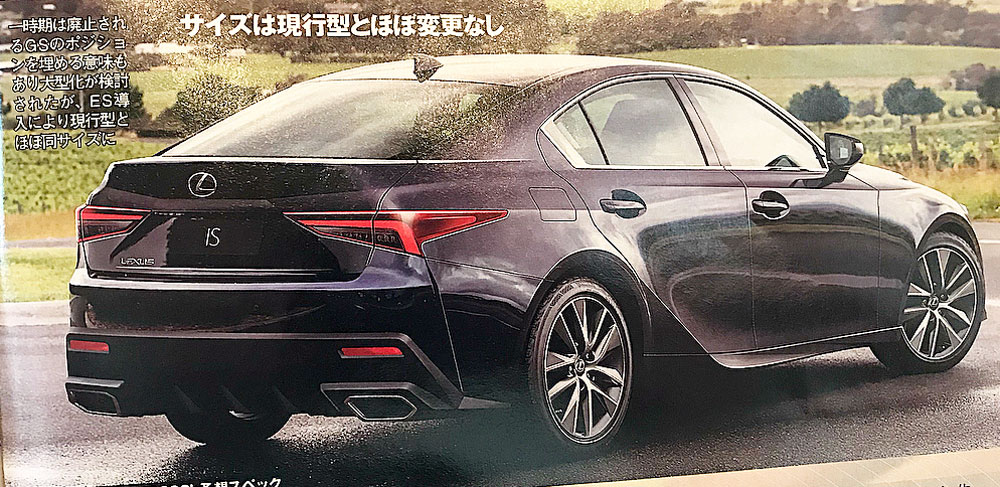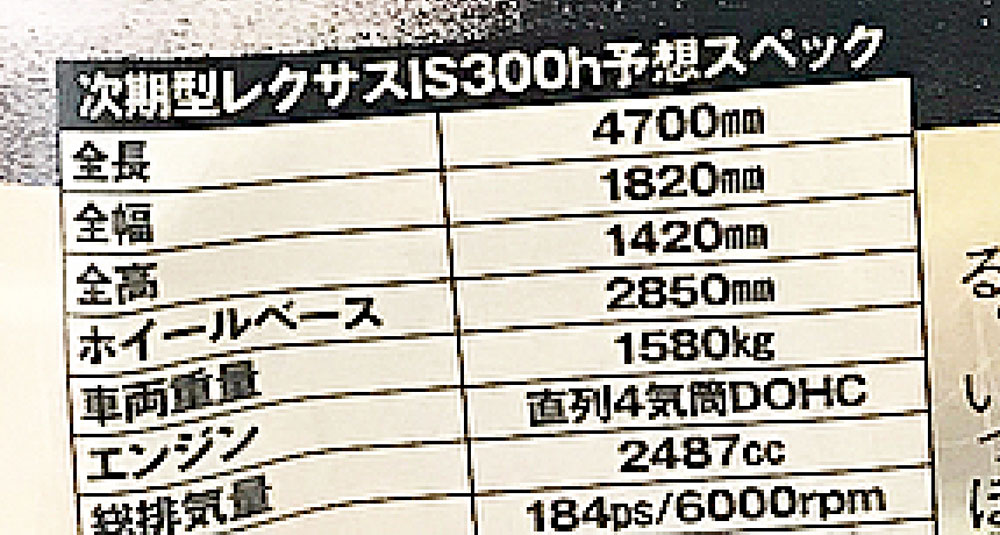Renderings of the next-generation Lexus IS are a favorite of the Japanese automotive press — this attempt by (a currently unknown) magazine was posted yesterday by a Lexus fan on Instagram:

The differences between this photochop and the existing model are minimal — the only changes are with the front and rear bumpers, making this rendering seem more like a mid-cycle refresh. That said, the design of the current IS sedan has never been a weakness, and maintaining some consistency across generations would not be a bad move.
The magazine mentions a 2021 release along with some preliminary dimensions:

Compared to the current model, the next-generation IS length and wheelbase would grow by 4cm, with all other measurements staying the same. Also mentioned is a 2.5L engine with 181 horsepower, which makes absolutely no sense and I’m choosing to ignore.


Comments